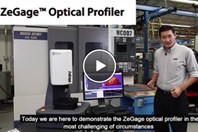AUTOMOTIVE WHITE PAPERS AND CASE STUDIES





AUTOMOTIVE NEWS
-
Photonics West 2026 offers over 100 technical conferences, 60 courses, and networking events spanning biomedical optics, lasers, quantum tech, and Vision Tech.
-
Photonic computing and telecommunications photonics optimize for fundamentally opposing requirements – latency versus distance, reconfigurability versus stability, nonlinearity versus linearity – demanding different materials, devices, and design philosophies.
-
Superlattice engineering enables atomic-precision control of semiconductor electronic and optical properties through nanoscale layering, creating devices impossible with bulk materials.
-
As photonic integrated circuits pack more components into smaller chips, power density and thermal effects create fundamental performance limits through thermo-optic resonance shifts, crosstalk, and stability challenges that scale nonlinearly with integration density.
-
Silicon photonics transceivers now exceed 1.6 Tbps using wavelength multiplexing, while co-packaged optics promise 70% power savings for AI workloads.
AUTOMOTIVE VIDEOS
-
Transducers are electro-mechanical devices that convert electrical energy to mechanical energy or vice versa. A well known and widely used transducer is the so-called "voice coil" transducer that is based on electromagnetic principles and finds applications in speakers and sub-woofers.
-
At Photonics West 2017, Frank Weiss with G&H offered practical advice on considerations one should take into account when specifying fiber optics for deployment in rugged environments, including life cycle requirements, the pitfalls of underspecifying, and the potential headaches that can be involved in not paying close attention to export control parameters.
-
The pco.dimax cs camera with its true 12-bit performance is ideal for providing crisp, brilliant color images for all car safety testing applications involving onboard, offboard, and sled testing. This high speed video presents car safety testing situations recorded with the pco.dimax cs camera.
-
In this video, one of Zygo’s applications engineers provides a demonstration of the ZeGageTM 3D optical surface profiler as it measures the roughness of the surface of a sealing valve used in the automotive industry. That might sounds fairly unremarkable, but check out how the system does on a rickety plastic table in a machine shop full of noise and vibration.
-
John Franks of Umicore tells about the lenses the company provides for applications involving automotive night vision, defense, security and surveillance, thermography, and personal thermal vision. He also shares some exciting news about new catalog lenses that are currently available.










